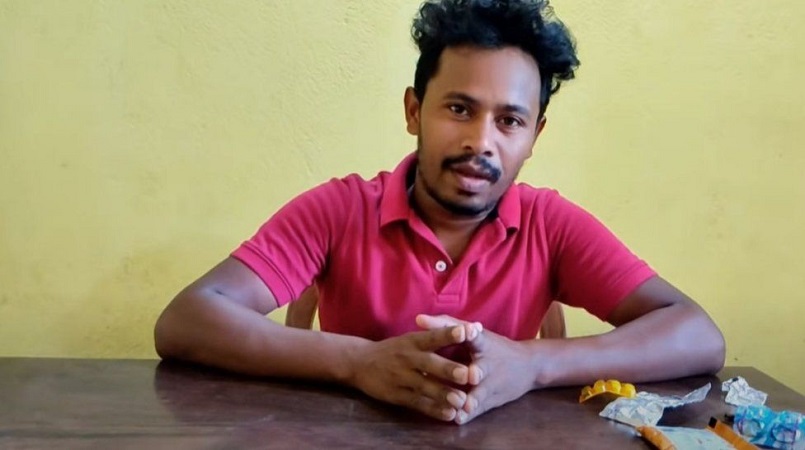
A daily wage labourer from India's Orissa state turned to YouTube after work dried up during the Covid lockdown - now, he is a social media star. BBC's Sandeep Sahu reports.
When Isak Munda uploaded his first YouTube video in March 2020, he was desperate. A nationwide lockdown imposed to curb Covid had brought India - and the construction industry that employed him - to a halt. It left workers like him, who earned a daily wage, struggling for a living.
Until inspiration struck.
His children were watching a cartoon on YouTube when Mr Munda overheard an advertisement on how people could earn money from the platform by uploading videos.
Why not try it, he thought to himself - he didn't have anything to lose. So, he scoured YouTube videos for tips and began with simple food videos.
In his first video, Mr Munda sits with a full plate of food - rice, dal, greens, a tomato and a chili - which he finishes in silence after greeting viewers. It didn't take off like he had hoped.
"For about a week, no-one watched my video. I was disheartened," he says.
He decided to give it another shot - he returned to YouTube for help and found that many creators also promoted their videos on other social platforms.
"I opened an account on Facebook and shared my videos there. This time, it worked - 10, 12 people watched my videos."
Soon, he had his first viral video in which he relishes basi pakhala, a fermented rice dish popular in Orissa.
"It got me over 20,000 subscribers in a few days. People from all over the world - the US, Brazil, Mongolia - watched it," he recalls.
It's all the encouragement he needed.
Two years on, Mr Munda's channel - Isak Munda Eating - has more than 800,000 subscribers and his videos have been watched more than a 100 million times. Mr Munda himself is now visibly comfortable in front of the camera as he hosts village "chicken parties" and forages for mushrooms with his family.
Last year, he was praised by Prime Minister Narendra Modi in his monthly radio show for "blending culture and cuisine" to become an "internet sensation".
"I was over the moon, and my subscriptions went up,"an ecstatic Mr Munda says.
Conquering YouTube through YouTube
Mr Munda's videos fall into the "mukbang" genre of YouTube videos - people eat huge amounts of food, sometimes speaking to their viewers as they do it.
The trend started around 2010 in South Korea and Japan, and then spread around the world. Millions subscribe to popular mukbang channels, including MaddyEats from India.
The genre's fans say they like playing mukbang videos in the background while they eat, especially if they are eating alone - they say it makes them feel less lonely.
But Mr Munda didn't know any of this when he began posting. He just went through different categories of videos before settling on food, which he knew he could cook with his wife's help.
"I thought viewers would be interested in seeing what our lives look like through food," he says.
And YouTube was his teacher - it's where he researched what camera to buy, how to shoot and edit videos, and even the recipes for the dishes he wanted to film himself eating. He withdrew 3,000 rupees ($39; £30) from his savings - a hefty sum for him - and purchased a smart phone to make videos. He paid the full amount in instalments.
He didn't finish school and knew little English. But he taught himself to use email, and social media to spread the word about his channel. He also learnt to use Google translate to add subtitles to his videos.
And he has got better.
The first video is just him eating his lunch, filmed in a single take. "Hello, friends," he says in Hindi. "I'm about to eat what you see on this plate". After explaining what it is, he relishes his meal.
But by February 2022 the videos are different. He doesn't shoot every meal or every day - instead he chooses special occasions, such as a village party.
Indians from everywhere comment on his videos, comparing the food he is eating to what's cooked in their homes.
Many admire how he shared his life with no artifice. "Their community feasting looks like so much fun," writes one viewer, and another says, "He actually knows the value of food and how to respect it".
Over time, Mr Munda's repertoire has expanded. From home-cooked close to his heart, he's moved on to taking requests from his followers to cook and eat different dishes. The northern Indian staple, aloo parathas, or potato-stuffed flatbreads, and the Indian take on chow mein, have made an appearance.
